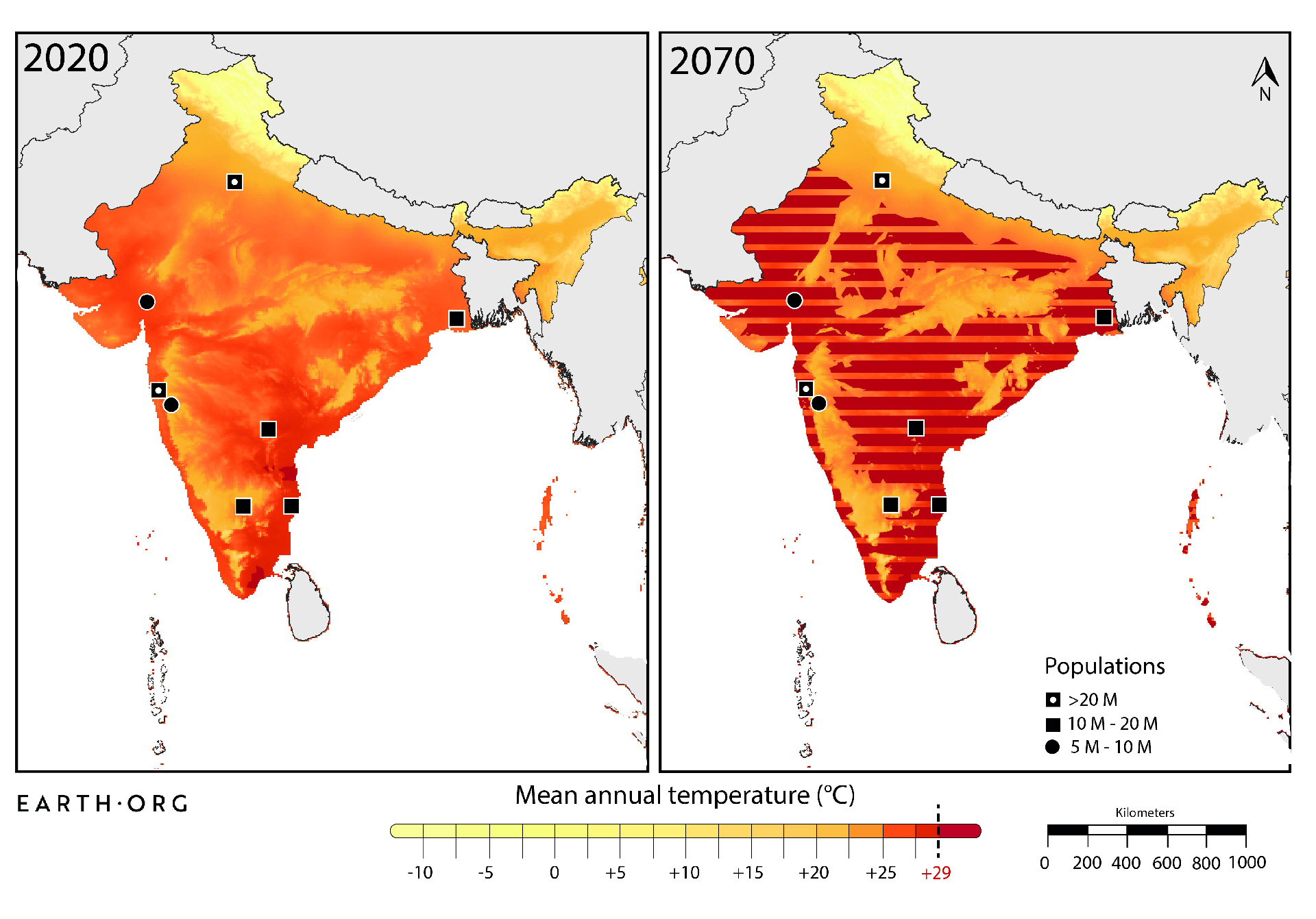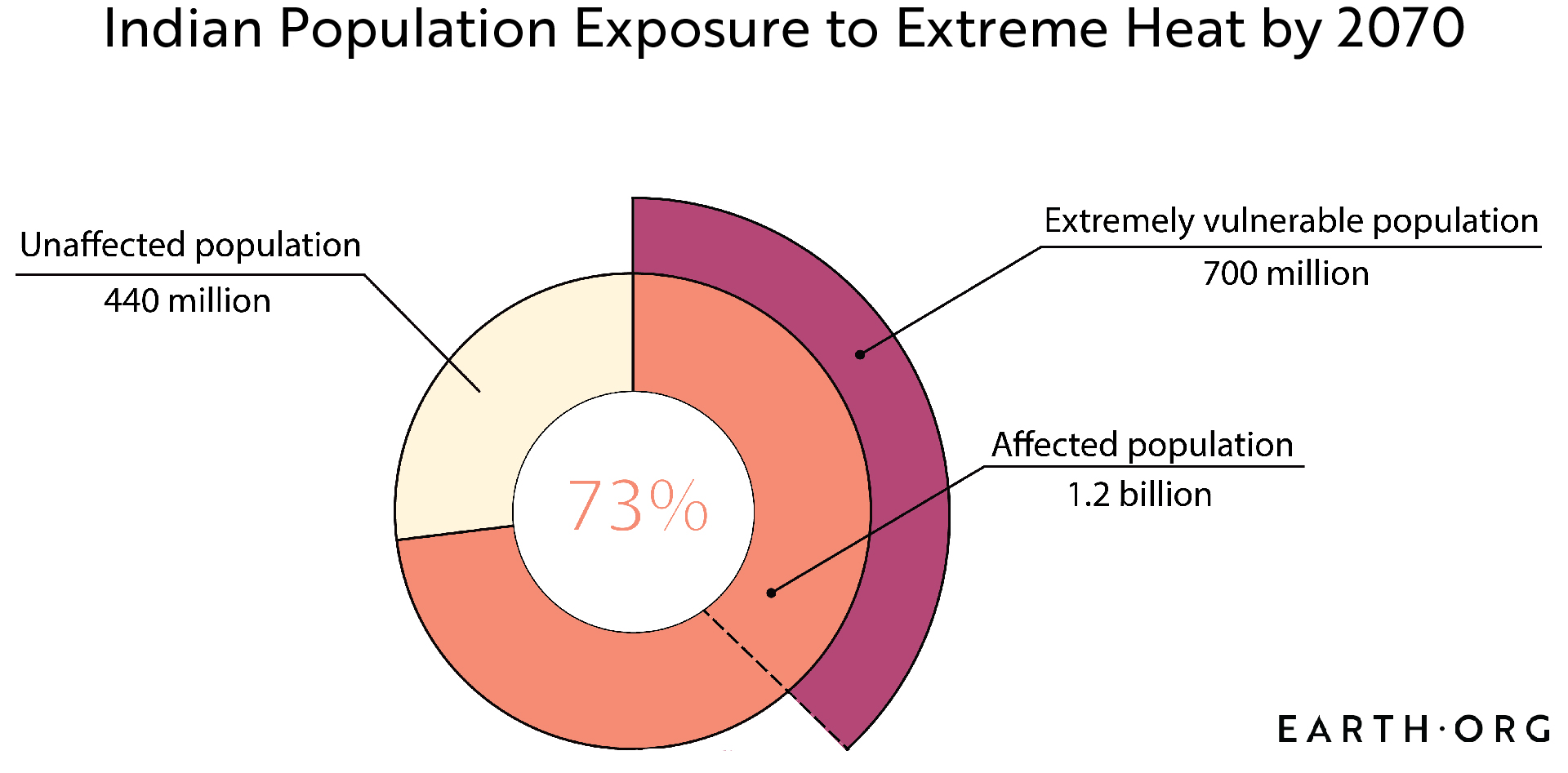Nineteen of the twenty hottest years on record have occurred since 2001, not including 2020 which is on track to top the list. Research has found that mean annual temperatures (MAT) above 29°C, currently found in 0.8% of the world and too hot to live in, could affect up to one third of the world’s population by 2070.
Most of India could experience such heat, and the consequences would be catastrophic.
—
This case study is based on the paper “Future of the human niche”, published in PNAS by Xu, Chi et al. (2020).
For thousands of years, humans have populated areas with MATs between ∼11 °C to 15 °C, which represent a fairly narrow subset of Earth’s climates. Nevertheless, large portions of our species reside in places with far higher MATs, and thus must deal with peak summer temperatures that challenge human limits and sometimes lead to death. In India, temperatures can vary between 40°C and -1°C but its MAT sits around 24°C and summers are often very hot.
In summer 2015, the country experienced a heatwave in its northwestern reaches that lasted two weeks and killed over 2,400 people. Humidity is an important factor as high levels can effectively cancel the cooling effect of sweat, making the heat more lethal. Notably, the cities of Hyderabad (9.7 million), Delhi (26.5 million), Allahabad (1.113 million) and more were cooked in temperatures exceeding 46°C. Phalodi (>49k) broke the daytime temperature record with 51°C the following year, and monthly records were recently topped in July 2019. We are starting to realise that these aren’t “exceptional heatwaves” but just the new norm.
To counter the deadly heat, the India Meteorological Department (IMD) and National Disaster Management Authority (NMDA) are overseeing efforts to mitigate health risks, both from temperature and other sources, such as COVID-19. The pandemic has significantly worsened the situation, as travel lockdown has stopped migrants from returning to their hometowns, forcing them into densely packed shelters. Nonetheless, adaptation plans have reduced heat-related deaths by up to 27% in some cities, which is a remarkable success.
Unfortunately, MATs in most of India are expected to rise above 29°C by 2070. The majority of its population will be exposed to unbearable heatwaves, against which only extensive air conditioning networks are viable.

Appearance of mean annual temperatures above 29°C in India by 2070. Points indicate large agglomerations. Map by Simon Papai.
Will this make India too hot to live in? Its economy is sure to make leaps and bounds by 2070, and technological adaptation will be achievable in many agglomerations, but a significant portion of its massive population might remain at high risk. Today’s heatwaves will also pale in comparison to those in the decades ahead, to the point where spending any more than 5 minutes outside could kill even a healthy, fit young individual (if humidity is high enough).

Proportion of the Indian population that will be exposed to temperatures “too hot to live in”. The “extremely vulnerable” are those living in rural areas or slums, with little to no access to heat mitigation. By Simon Papai.
Logically this imposes considerations of relocation, but try to imagine the havoc that a 700 million person displacement would wreak; I don’t think any of us can quite picture it. The bottom line: If we do not take decisive action soon, our available niche will dwindle with resonating consequences.
This article was written by Owen Mulhern. Mapping by Simon Papai.
You might also like: Illegal Elephant Poaching in Africa










![The Statistics of Biodiversity Loss [2020 WWF Report]](https://u4d2z7k9.rocketcdn.me/wp-content/uploads/2020/12/lprwinkyTHB-544x306.jpg)





